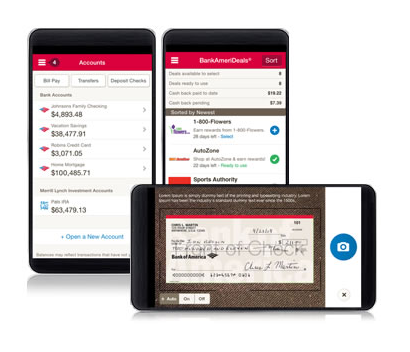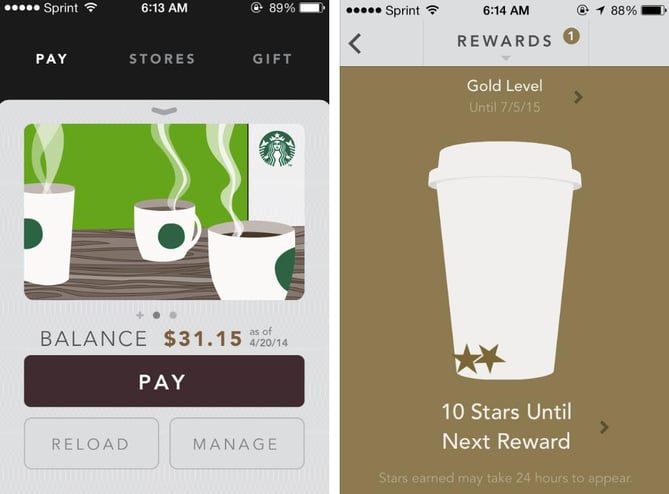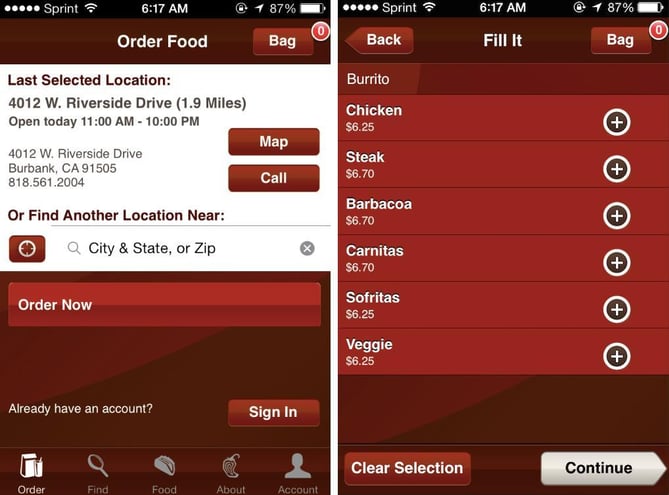And as people change their behaviors, marketers will need to react. Instead of thinking of a desktop experience, a mobile experience, a tablet experience, and a Apple Watch experience, we’ll need to pursue one, holistic approach — an omni-channel experience.
What Is an Omni-Channel User Experience?
At its core, omni-channel is defined as:
… a multichannel approach to sales that seeks to provide the customer with a seamless shopping experience whether the customer is shopping online from a desktop or mobile device, by telephone or in a bricks and mortar store.”
It’s important here to distinguish an omni-channel user experience from a multi-channel user experience. Essentially, it comes down to the depth of the integration.
All omni-channel experiences will use multiple channels, but not all multi-channel experiences are omni-channel. Remember that. You can have amazing mobile marketing, engaging social media campaigns, and a well-designed website. But if they don’t work together, it’s not omni-channel.
The multi-channel experience is what most businesses invest in today. They have a website, blog, Facebook, and Twitter. They use each of these platforms to engage and connect with customers. However, in most cases, the customer still lacks a seamless experience and consistent messaging across each of these channels.
An omni-channel approach, on the other hand, accounts for each platform and device a customer will use to interact with the company. That knowledge is then used to deliver an integrated experience. Companies using this technique align their messaging, goals, objectives, and design across each channel and device.
To learn how to start implementing one in your company, keep on reading. We’ll even highlight some inspiring brands that are already making moves to become more omni-channel.
Determine Your Cross-Channel Strategy

(Source: Kana)
Every company must develop its own unique omni-channel infrastructure, and you’ll need to work closely with several departments in your company to develop this strong strategy. While building your own program, look to the following stakeholders:
- Executives
- IT
- Marketing
- Customer Service
- Staff directly involved in the experience
Once everyone understands the goals and objectives of your omni-channel initiative, you can start planning your transition to this model. Including these departments early on will make it easier as you try to shift into an omni-channel way of doing things — it’s less of a headache down the road when you get people excited in the beginning.
Ultimately, your strategy should consist of a strategic plan to build a coherent, aligned experience across multiple platforms, which may include any or all of the channels featured in the above graphic.
Because this is still a relatively new emerging concept, there’s still time to start small and expand in the future. And if you need some inspiration, you can find plenty of companies that have already implemented fantastic omni-channel user experiences.
7 Companies With Inspiring Omni-Channel Experiences
It’s one thing to discuss the theory and practice of omni-channel user experience. But it’s something else entirely to see brilliant companies that are already implementing it in their strategies. Here are a few that I admire most.
1) Disney
Disney gets omni-channel right, down to the smallest details. It’s starts with your initial experience on the entertainment giant’s beautiful, mobile-responsive website. Even their trip-planning website works well on mobile — that alone is something you don’t see happening very often.

Once you’ve booked a trip, you can use the My Disney Experience tool to plan your entire trip, from where you’ll dine to securing your Fast Pass. In the park, you can use your mobile app to locate the attractions you want to see, as well as view the estimated wait time for each of them.
The imaginative company takes it one step further, though, with the release of its Magic Band program. This tool acts as a hotel room key, photo storage device for any pictures taken of you with Disney characters, and a food ordering tool. Plus, it even has Fast Pass integration to keep your vacation moving.
That’s a truly omni-channel experience, and it’s a privilege to see Disney leading the way.
2) Virgin Atlantic
Robert Fransgaard shared an account of his amazing experience with Virgin Atlantic’s omni-channel customer service experience.
In his anecdote, he shares the story of his personalized experience with a representative named Dan, who, after being the unwitting recipient of Robert’s frustration over a missed engineer appointment, encouraged Robert to reach out to him directly in the event of any future issues.
Dan didn’t say to call customer service, or to post another tweet to get attention. Dan reached across the company’s different marketing channels to give Robert a personalized service experience.
It’s amazing what a personal touch like this can do, especially when it comes to consoling customers that have had a poor experience with the company.
Virgin leads the way in many aspects of omni-channel marketing, but this account seems to best describe the types of things that can happen when all channels and employees work together seamlessly.
3) Bank of America
Bank of America takes their omni-channel development seriously. As one of the biggest brands in their industry, they’re setting the standard for a dynamic experience, which — as of today — allows for everything from check depositing to appointment scheduling to be handled by the company’s mobile and desktop apps.

Sure, Bank of America still has a ways to go. As of yet, users can’t apply for loans or carry out other more complex banking needs from their phones. But other activities, such as paying your monthly bills or depositing a check, shouldn’t require that level of hassle — and the company’s commitment to the omni-channel experience ensures that it doesn’t.
4) Oasis
Oasis is a U.K. fashion retailer that’s fusing their ecommerce site, mobile app, and brick-and-mortar stores into a simple shopping experience.
If you walk into one of their stores, you’ll find sales associates armed with iPads that are available to give you on-the-spot, accurate, and up-to-date product information. The iPad also acts as a cash register, making it easy for associates to ring you up from anywhere in the store. And the cherry on top? If it appears that something is out of stock, the staff can instantly place an online order for you to have the item shipped directly to your home.
If that’s not customer service, I don’t know what is.
5) REI
At least 43% of customers have used their mobile phone while shopping in a brick-and-mortar store. That fact alone provides a glimpse into the importance of omni-channel marketing. Imagine a shopper looking for an item that your website or app says is currently in stock … but it’s not. You have it in-store. That’s not a great experience.
Instead, you need to make sure that each of your shopping channels work instantaneously with one another to provide something truly powerful. REI does this well through their many shopping touch points.

With the company’s omni-channel initiative, you’ll find up-to-date and accurate product information at every turn. And that kind of internal communication will keep customers happy, satisfied and returning back to their store again and again.
6) Starbucks
A quick look at the Starbucks reward app will reveal why many consider it one of the top omni-channel experiences out there.
First, you get a free rewards card that you can use whenever you make a purchase. But unlike traditional customer loyalty programs, Starbucks has made it possible to check and reload your card via phone, website, in-store, or on the app. Any change to the card or your profile gets updated across all channels, in real-time.
Standing in line to get a coffee and realize your don’t have enough on your balance? Reload it and the cashier will know it’s been updated by the time you swipe your card.

7) Chipotle
Have you ever ordered something online, only to find that the restaurant hadn’t received word of your purchase by the time you arrived? I hate when that happens. What’s the point of an online ordering system if I have to come in and place (or wait) for my order anyway?
Chipotle seeks to eradicate that frustration with its online experience. Their online system and mobile ordering app allows you to place an order wherever you are.
On-the-go and need a quick way to order? Signing up for an account allows you to save your favorite orders for a quick and seamless experience. Want to take up requests from everyone around the office? Place an order online for the whole team and have it ready by the time you arrive.
With omni-channel, it’s all about making the customer’s life as easy as possible. And with its easy-to-navigate tools that provide on-the-go ordering access, Chipotle does a great job at that.

Certainly, omni-channel user experiences still have a long ways to go, and the scale of some of the integrations described above may make the entire endeavor feel out of reach for smaller companies.
But personally, I don’t think we’re that far away from a world where omni-channel is accessible to brands of all sizes. Technology has come a long way over the past decade, and there’s no doubt in my mind that future changes will make it possible for even the smallest of companies to engage directly with customers — no matter where they are, what they’re doing, or what device they’re using.
Having seen the above examples, what do you think your company can do to get started with a deeper omni-channel user experience? I’d love to hear your thoughts!
Aaron Agius | @IAmAaronAgius
